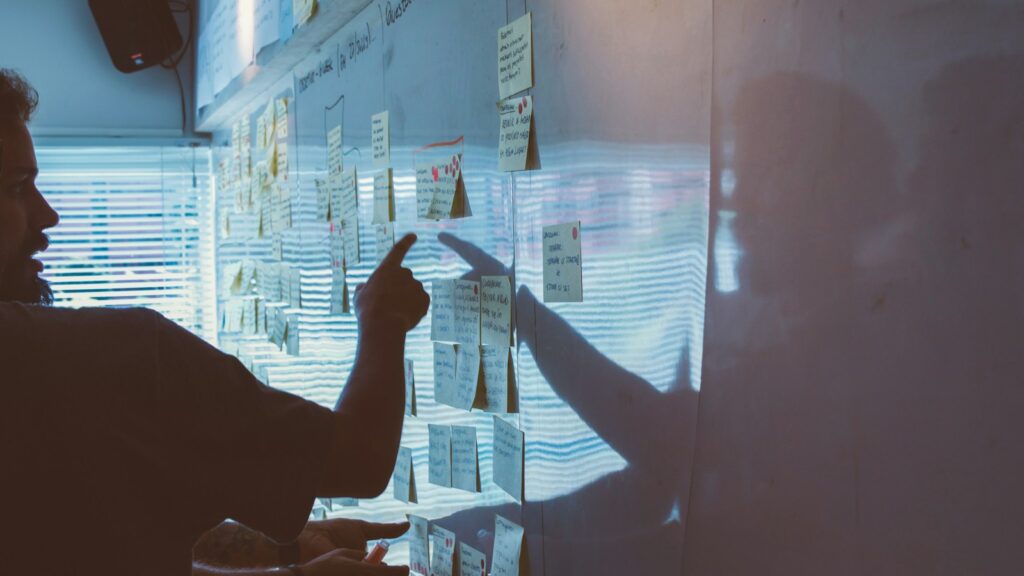Part two of our ‘Back to basics in learning and development’ series explores performance-focused learning.
Back in 2007, Kogan Page published the third book that I co-authored with Sara Thorpe – Workplace Learning and Development. In this book, we focused on how workplace learning needs to be supported by a range of well-selected learning methods.
I believe that much of what was true 16 years ago still holds true today. Having said that, the world has changed rapidly and significantly, so I wanted to take the time to think about learning methods in the context of performance-focused learning.
What is performance-focused learning?
From a workplace perspective, performance-focused learning is all about designing learning interventions with one clear goal: to improve how well people do their jobs. Because of this goal, the learning will be about developing skills, knowledge and behaviours that can be directly – and immediately – applied to everyday work scenarios. This approach will ensure that the learning which takes place is used in a way which has a positive impact on a person’s work performance.
For example, in the past, we might have included an introduction to a specific software package as part of an employee’s induction programme without giving them any job-specific context for the training. By taking a performance-focused approach, we are more likely to give our new employee time to settle into their job role, give them an overview of their daily tasks and then show them how to use the software package to complete each of those tasks. This approach gives the individual context, meaning and motivation to learn the system because it is having a direct and visible impact on their daily working life.
We didn’t think that ‘YouTubing it’ or ‘Googling it’ would be daily activities.
Learning methods
When I looked back at our list of learning methods in ‘Workplace Learning and Development’ these are what I found:
- Action learning
- Apprenticeships
- Coaching
- Delegation
- Discussion boards and groups
- Distance learning
- Drama-based learning
- E-learning
- Executive coaching
- Mentoring
- Networking
- On-the-job training
- Outdoor education/learning
- Professional membership
- Professional supervision
- Projects
- Qualifications
- Reflective practice
- Secondments
- Self-study
- Shadowing
- Temporary promotion
- Trade exhibitions
- Training courses
As I reflect on the list, all of these methods are still available today. I also note that back in 2007, some methods that we use now were not available or not widely considered to be learning methods. For example, we hadn’t yet coined the phrase ‘learning in the flow of work’. We didn’t think that ‘YouTubing it’ or ‘Googling it’ would be daily activities. And we never would have conceived of ‘asking Chat GPT’!
Learning intervention questions
When we are designing a learning intervention, and choosing learning methods, we will often ask ourselves these questions (or similar ones):
- What are the required outcomes?
- Who has this development need?
- What is the deadline?
- What are the organisational factors that need to be considered (e.g. what methods are people used to)?
- What is the budget available?
- What non-financial resources are available (e.g. time, equipment)?
This is all well and good. But we haven’t yet asked the fundamental question which is ‘how do we know that the approach we have chosen will ensure that the learning has an impact on workplace performance?’
I will come back to something that I have said before – and will no doubt say again!
We need to put in place the framework and climate where learning can take place and be applied.
Whatever the learning methods we choose, we need to plan for transfer to the workplace.
That planning needs to involve not only the designer of the learning intervention, but also the learner(s) and their line manager(s).
when we are designing a learning intervention we need to start with the end in mind
Ask yourself
Here are some questions that we can ask ourselves which will support the planning process and ensure that the learning impacts performance:
- Relevance to the job role:
- How does this learning directly apply to the learners’ job roles and responsibilities?
- Are there clear links between the learning objectives and the day-to-day tasks of the learners and can the learners and their managers see these links?
- Practical application:
- What opportunities do/will learners have to apply what they’ve learned in their work? How soon will these opportunities be available?
- How can we create new opportunities for learners to immediately practice new skills or knowledge?
- Support from management:
- To what extent do managers understand the value of this learning?
- To what extent do managers see the implementation of this learning as a priority?
- What can we do so that managers are equipped to support their team members in applying their new skills?
- Measurement of success:
- What metrics or indicators will we use to measure the successful application of learning in the workplace?
- How will we gather feedback from learners and their managers about the practical application of the learning?
- How will we measure performance improvement?
- Follow-up and reinforcement:
- What follow-up sessions or reinforcement activities can we plan to support learning transfer?
- How can we incorporate regular check-ins or refresher sessions to reinforce learning?
- Cultural fit:
- To what extent does our organisational culture support continuous learning and its application?
- How can we strengthen a culture that values and applies ongoing learning?
- Resources and tools:
- To what extent will learners have access to the necessary resources and tools to apply what they’ve learned?
- How can we ensure ongoing access to the resources and tools so that performance improvement can be continuous?
- Barriers to application:
- What potential obstacles might prevent learners from applying their new skills? What can we do to address these barriers?
- Learner motivation:
- What will motivate our learners to apply their learning so that it improves their performance in the workplace?”
- What can we do to align learning outcomes and measures of success with these motivators?
- Feedback Mechanisms:
- How will we collect and use feedback from learners about the transfer of learning?
- What systems are in place for learners to share their successes and challenges in applying their learning back in the workplace?
In conclusion, when we are designing a learning intervention we need to start with the end in mind. And that end is to see tangible improvements in individual, team and organisational performance.
I hope that this article has sparked some thinking and reflection. As I come to the end of writing it, I realise what a broad topic this is. It is definitely one to come back to again and again – and I hope that you will!
Your guide to solid L&D foundations: Check out the back-to-basics series here.
Back in 2007, Kogan Page published the third book that I co-authored with Sara Thorpe – Workplace Learning and Development. In this book, we focused on how workplace learning needs to be supported by a range of well-selected learning methods.
I believe that much of what was true 16 years ago still holds true today. Having said that, the world has changed rapidly and significantly, so I wanted to take the time to think about learning methods in the context of performance-focused learning.
What is performance-focused learning?
From a workplace perspective, performance-focused learning is all about designing learning interventions with one clear goal: to improve how well people do their jobs. Because of this goal, the learning will be about developing skills, knowledge and behaviours that can be directly – and immediately - applied to everyday work scenarios. This approach will ensure that the learning which takes place is used in a way which has a positive impact on a person's work performance.
For example, in the past, we might have included an introduction to a specific software package as part of an employee’s induction programme without giving them any job-specific context for the training. By taking a performance-focused approach, we are more likely to give our new employee time to settle into their job role, give them an overview of their daily tasks and then show them how to use the software package to complete each of those tasks. This approach gives the individual context, meaning and motivation to learn the system because it is having a direct and visible impact on their daily working life.
We didn’t think that ‘YouTubing it’ or ‘Googling it’ would be daily activities.
Learning methods
When I looked back at our list of learning methods in ‘Workplace Learning and Development’ these are what I found:
- Action learning
- Apprenticeships
- Coaching
- Delegation
- Discussion boards and groups
- Distance learning
- Drama-based learning
- E-learning
- Executive coaching
- Mentoring
- Networking
- On-the-job training
- Outdoor education/learning
- Professional membership
- Professional supervision
- Projects
- Qualifications
- Reflective practice
- Secondments
- Self-study
- Shadowing
- Temporary promotion
- Trade exhibitions
- Training courses
As I reflect on the list, all of these methods are still available today. I also note that back in 2007, some methods that we use now were not available or not widely considered to be learning methods. For example, we hadn’t yet coined the phrase ‘learning in the flow of work’. We didn’t think that ‘YouTubing it’ or ‘Googling it’ would be daily activities. And we never would have conceived of ‘asking Chat GPT’!
Learning intervention questions
When we are designing a learning intervention, and choosing learning methods, we will often ask ourselves these questions (or similar ones):
- What are the required outcomes?
- Who has this development need?
- What is the deadline?
- What are the organisational factors that need to be considered (e.g. what methods are people used to)?
- What is the budget available?
- What non-financial resources are available (e.g. time, equipment)?
This is all well and good. But we haven’t yet asked the fundamental question which is ‘how do we know that the approach we have chosen will ensure that the learning has an impact on workplace performance?’
I will come back to something that I have said before – and will no doubt say again!
We need to put in place the framework and climate where learning can take place and be applied.
Whatever the learning methods we choose, we need to plan for transfer to the workplace.
That planning needs to involve not only the designer of the learning intervention, but also the learner(s) and their line manager(s).
when we are designing a learning intervention we need to start with the end in mind
Ask yourself
Here are some questions that we can ask ourselves which will support the planning process and ensure that the learning impacts performance:
- Relevance to the job role:
- How does this learning directly apply to the learners' job roles and responsibilities?
- Are there clear links between the learning objectives and the day-to-day tasks of the learners and can the learners and their managers see these links?
- Practical application:
- What opportunities do/will learners have to apply what they've learned in their work? How soon will these opportunities be available?
- How can we create new opportunities for learners to immediately practice new skills or knowledge?
- Support from management:
- To what extent do managers understand the value of this learning?
- To what extent do managers see the implementation of this learning as a priority?
- What can we do so that managers are equipped to support their team members in applying their new skills?
- Measurement of success:
- What metrics or indicators will we use to measure the successful application of learning in the workplace?
- How will we gather feedback from learners and their managers about the practical application of the learning?
- How will we measure performance improvement?
- Follow-up and reinforcement:
- What follow-up sessions or reinforcement activities can we plan to support learning transfer?
- How can we incorporate regular check-ins or refresher sessions to reinforce learning?
- Cultural fit:
- To what extent does our organisational culture support continuous learning and its application?
- How can we strengthen a culture that values and applies ongoing learning?
- Resources and tools:
- To what extent will learners have access to the necessary resources and tools to apply what they've learned?
- How can we ensure ongoing access to the resources and tools so that performance improvement can be continuous?
- Barriers to application:
- What potential obstacles might prevent learners from applying their new skills? What can we do to address these barriers?
- Learner motivation:
- What will motivate our learners to apply their learning so that it improves their performance in the workplace?"
- What can we do to align learning outcomes and measures of success with these motivators?
- Feedback Mechanisms:
- How will we collect and use feedback from learners about the transfer of learning?
- What systems are in place for learners to share their successes and challenges in applying their learning back in the workplace?
In conclusion, when we are designing a learning intervention we need to start with the end in mind. And that end is to see tangible improvements in individual, team and organisational performance.
I hope that this article has sparked some thinking and reflection. As I come to the end of writing it, I realise what a broad topic this is. It is definitely one to come back to again and again – and I hope that you will!
Interested in this topic? Read part one: How to conduct a learning needs analysis in three steps





